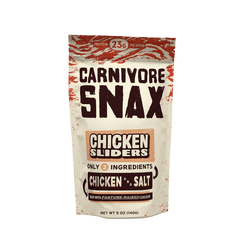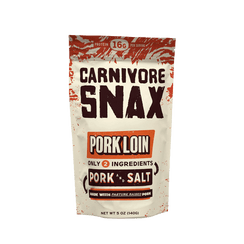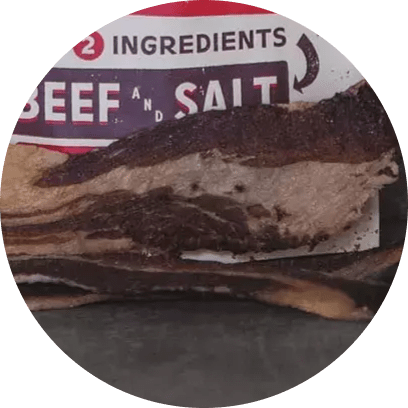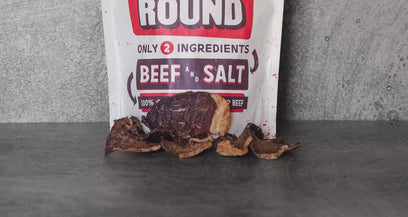THE CARNIVORE DIET BENEFITS




Are you looking to discover the benefits of regenerative agriculture and farming? You’ve come to the right place.
Here at Carnivore Snax, we are advocates for this more natural approach to growing or raising food. In fact, we put our money where our mouth is - sourcing all our carnivore crisps through the most elite, ethical regenerative farms in the nation.
There’s a reason we do this - and it’s the same reason countless individuals like yourself are standing up against the harmful commercialization of our food supply chain. The benefits of regenerative farming are vast and profound.
To paint a picture for you of just how important this practice is, we’ve chiseled it down to the 8 most powerful benefits of regenerative farming below. After we break these down for you in great detail, we’ll cover what your next steps should be in terms of supporting the movement.
What are the Benefits of Regenerative Agriculture?
If we had to summarize the benefits of regenerative farming in a single sentence, it would be this: sustainable, resilient, and eco-friendly farming for a healthier planet and nutritious food.
The common theme you’ll discover below is that all the work that goes into setting up and running a regenerative farm is centered around natural, tried-and-true practices that our ancestors would have used - before the commercialization and advancement of farming that exists today.
And, just about every practice a regenerative farmer employs is with the goal of improving soil health. Here’s why…
Better Soil Health Preserves Our Lands
Regenerative agriculture focuses on nurturing the soil, which is the foundation of healthy ecosystems and productive farmland - whether you’re growing a crop or raising a herd.
By increasing organic matter in the soil, enhancing soil structure, and promoting a diverse community of microorganisms, regenerative farming preserves our lands for future generations. Healthy soil is more resistant to erosion, requires fewer inputs, and supports robust crop growth, ensuring a sustainable food supply for years to come.
Carbon Sequestration Means Lower Greenhouse Gasses
One of the most significant benefits of regenerative agriculture is its ability to sequester carbon from the atmosphere and store it in the soil. In fact, this single benefit is so profound we recently wrote a complete guide on how regenerative farming sequesters carbon.
Through practices such as cover cropping, reduced tillage, and agroforestry, regenerative farming captures carbon dioxide, helping to mitigate the harmful effects of commercial farming or agriculture. This not only reduces the environmental impact of agriculture but also contributes to the preservation of our lands.
Reduced Reliance on Synthetic Inputs
Regenerative agriculture prioritizes natural processes, fostering a balanced ecosystem that minimizes the need for chemical fertilizers, pesticides, and herbicides.
These harsh chemical inputs are “quick, cheap fixes” for the modern farmer. But, they compromise on the quality and safety of the food you end up eating. And, they can wreak havoc on our lands.
This is why reducing the usage of these inputs is so important. By relying on cover crops, crop rotation, and natural predators, farmers can reduce their dependence on synthetic inputs, lowering both environmental impacts and input costs.
Enhanced Biodiversity Protects Key Insects & Wildlife
By creating diverse habitats and encouraging a wide variety of plant species, regenerative agriculture supports vital ecosystems that are home to pollinators, beneficial insects, and wildlife.
This helps maintain the delicate balance of our ecosystems and ensures the survival of species that play essential roles in pollination and pest control. Think about it like this: a diverse ecosystem is a resilient ecosystem! This leads us to the next benefit of regenerative agriculture we want to discuss…
Greater Crop & Food Supply Resilience
Healthier soils and diverse crop systems increase resistance to pests, diseases, and extreme weather events. Regenerative agriculture's emphasis on soil health and biodiversity ensures a more resilient food supply, reducing the risk of crop failures and food shortages.
We’ve witnessed before the impact that droughts or disease outbreaks can have on food supply. Rather than attempting to stop the effects of mother nature, we should be working to create a food supply system that can withstand these impacts.
Higher Crop Quality in Terms of Taste & Nutrition
Regenerative farming practices lead to more nutritious, better-tasting crops. By nurturing soil health and promoting a balanced ecosystem, plants have access to the nutrients they need to thrive, resulting in higher-quality produce with enhanced flavors and nutritional content.
Plus, there are no synthetic inputs to affect the taste or nutritional value of your food. You get to enjoy your favorite foods as they were intended.
Improved Farmer Health, Happiness, & Profitability
Regenerative farming isn’t just better for the end consumer and our lands. It’s better for the farmers and workers involved in the supply chain.
By adopting regenerative agriculture practices, farmers can reduce input costs, increase crop yields, and access niche markets, leading to greater profitability. Additionally, working in harmony with nature can contribute to improved mental and physical well-being, creating a healthier, happier farming community.
Plus, this gives you the opportunity to support farmers local to you. There are few things as rewarding as keeping your community thriving and strengthening the economy in your area. The chance to help your neighbors earn a living doing what they love is reason enough to support regenerative agriculture!
Better Water Quality & Efficiency
Last - but certainly not least - regenerative farming leads to better water quality and efficiency. Regenerative agriculture improves water quality by reducing chemical inputs and minimizing runoff, leading to cleaner water in rivers, lakes, and groundwater sources.
Healthier soil with better structure can absorb and hold more water, reducing the need for irrigation and increasing water-use efficiency. This not only conserves water resources but also protects aquatic ecosystems from pollution.
In Order for Our World to Experience the Benefits of Regenerative Agriculture, Here’s What Needs to Happen…
As you can see, the benefits of regenerative farming are profound. But…how do we ensure our society is able to reap these benefits before it's too late?
We have a detailed article explaining how to support regenerative agriculture. However, we’ll summarize the key points for you below so you can get started doing your part today. First things first - educate yourself and others.
Educate Yourself and Others
Before you can start advocating for something, you need a solid grasp on what you’re advocating for! Discovering the benefits of regenerative agriculture is a great first step. But you should take a step backward now, and explore our blog for more helpful resources.
You can read our introductory guides on the history of regenerative agriculture and what regenerative agriculture is in the first place. There, we discuss the tactics and science behind how regenerative agriculture works. You can also read articles on related topics such as regenerative agriculture vs permaculture to round out your knowledge of this topic.
From there, it’s just a matter of showing others in your life the implications of a food supply chain that’s reliant on regenerative farming - not the harmful commercial practices employed today! Or, better yet, advocate for policy changes…
Advocate for Change
Defeating the powers behind commercial ag is not going to be an easy feat. Every voice matters - including yours.
So, contact your local representatives and urge them to support policies and initiatives that promote organic and regenerative farming practices. This can include funding for research, educational programs, and financial incentives for farmers.
Or, better yet, hit big ag where it hurts the most: their balance sheet.
Only Eat Food That Was Sourced Through Regenerative Agriculture
You can learn how to do regenerative agriculture yourself and grow some of your own produce. Not only will this reduce your reliance on the food supply chain while impacting big ag. But, this can be a very rewarding experience that changes your life in ways you never thought possible.
For the product or food inputs you can’t grow yourself, shop locally with farmers in your community whose values align with your own. You’ll find that not only are you getting better quality food, but you feel better about yourself by supporting your neighbors.
Now, in instances where you can’t get what you need in your own garden or through a local farm, shop smart with brands that source through regenerative farms. Our meat chip collection is a great example of this.
We partner with regenerative farmers for all our delicious, melt-in-your-mouth “meat pastries”. Whether you’re on carnivore diet vs keto, or simply want the best low carb snack that doesn’t force you to sacrifice on your values, you’ll love Carnivore Snax.
Explore our full range of meat chips - including ribeye chips, steak chips, lamb chips, beef chips, brisket chips, chicken chips, and pork chips.
Parting Thoughts on the Benefits of Regenerative Farming
We’ve discussed why regenerative agriculture is important in great detail, highlighting all the key benefits of regenerative farming. And at this point, there’s just one thing left to do. Start implementing the advice we mentioned above and help create meaningful change here in our food supply chain!
A great first step is heading over to Carnivore Snax and stocking up on our nutritious, tantalizing carnivore chips. With just two ingredients and a sourcing process you believe in, your new favorite snacks are just a few clicks away!























